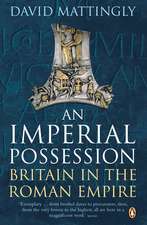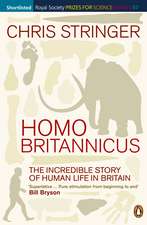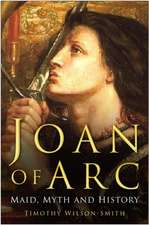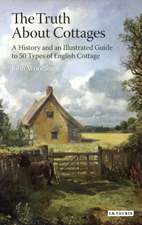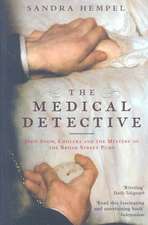Ramus, Method, and the Decay of Dialogue: From the Art of Discourse to the Art of Reason
Autor Walter J. Ong, S.J. Cuvânt înainte de Adrian Johnsen Limba Engleză Paperback – 31 ian 2005
Renaissance logician, philosopher, humanist, and teacher, Peter Ramus (1515-72) is best known for his attack on Aristotelian logic, his radical pedagogical theories, and his new interpretation for the canon of rhetoric. His work, published in Latin and translated into many languages, has influenced the study of Renaissance literature, rhetoric, education, logic, and—more recently—media studies.
Considered the most important work of Walter Ong's career, Ramus, Method, and the Decay of Dialogue is an elegant review of the history of Ramist scholarship and Ramus's quarrels with Aristotle. A key influence on Marshall McLuhan, with whom Ong enjoys the status of honorary guru among technophiles, this challenging study remains the most detailed account of Ramus's method ever published. Out of print for more than a decade, this book—with a new foreword by Adrian Johns—is a canonical text for enthusiasts of media, Renaissance literature, and intellectual history.
Considered the most important work of Walter Ong's career, Ramus, Method, and the Decay of Dialogue is an elegant review of the history of Ramist scholarship and Ramus's quarrels with Aristotle. A key influence on Marshall McLuhan, with whom Ong enjoys the status of honorary guru among technophiles, this challenging study remains the most detailed account of Ramus's method ever published. Out of print for more than a decade, this book—with a new foreword by Adrian Johns—is a canonical text for enthusiasts of media, Renaissance literature, and intellectual history.
Preț: 324.67 lei
Nou
Puncte Express: 487
Preț estimativ în valută:
62.13€ • 64.19$ • 51.71£
62.13€ • 64.19$ • 51.71£
Carte tipărită la comandă
Livrare economică 25 martie-08 aprilie
Preluare comenzi: 021 569.72.76
Specificații
ISBN-13: 9780226629766
ISBN-10: 0226629767
Pagini: 436
Ilustrații: 8 tables
Dimensiuni: 152 x 229 x 30 mm
Greutate: 0.57 kg
Ediția:1
Editura: University of Chicago Press
Colecția University of Chicago Press
ISBN-10: 0226629767
Pagini: 436
Ilustrații: 8 tables
Dimensiuni: 152 x 229 x 30 mm
Greutate: 0.57 kg
Ediția:1
Editura: University of Chicago Press
Colecția University of Chicago Press
Notă biografică
Walter J. Ong, SJ (1912-2003) was professor at St. Louis University and an internationally renowned scholar of rhetorical theory and history. He is the author of numerous books, including In the Human Grain: Further Explorations of Contemporary Culture and Orality and Literacy: The Technologizing of the Word.
Cuprins
Book One. Issues
I. Ramism in Intellectual Tradition
1. The Present Front
2. The Anonymous Center of Tradition
3. The Universal Language
4. Ramism International
II. Vectors in Ramus' Career
1. Biographical Sources
2. From Birth to the Regius Professorship
3. Regius Professor of Eloquence and Philosophy
4. Success, Troubles, and Death
5. Ramus as Teacher and Writer
6. The Metamorphosis and Significance of Ramus' Reputation
III. The Structure of Reform
1. The M. A. Thesis: Its Content
2. The M. A. Thesis: Its Authenticity
3. Ramus' Own Account of His Reform
4. The Meaning of Commentitia
5. Ramus on the History of Dialectic
6. Ramus and Italian Humanism
Book Two. Background
IV. The Distant Background: Scholasticism and the Quantification of Thought
1. Ramism, Humanism, and Scholasticism
2. Scholastic Logic: Peter of Spain
3. The Humanists' Bogie: The Summulae logicales
4. The Summulae logicales and the Probable Logics
5. Peter's Places
6. Supposition Theory and Corpuscles
7. Quantification and the Summulae logicales
8. Logic in Space: Lefèvre d'Etaples, Tartaret, Major, Celaya
9. The Geometry of Pedagogy: The Allegory as Diagram
V. The Immediate Background: Agricola's Place-Logic
1. The Dialectical Revolution
2. Rudolph Agricola
3. Agricola, Scholasticism, and the Gutenberg Era
4. Agricola's Dialectical Invention
5. Dialectic Defined: Discourse and Probabilities
6. Discourse as Teaching
7. Topics versus Categories: Topical Logics
8. Invention and Judgment
9. The Loci or Places: Woods and Boxes
10. The Fickle Places
11. The Impact of Agricola's Topical Logic
12. The Commentator's Agricola: Words and "Things"
VI. The Common Background: Arts Scholasticism
1. Scholasticism in Twentieth-Century Perspective
2. More Arts than Theology
3. Philosophy for Adolescents: The Arts Course
4. Logic and Youth
5. Metaphysics, Ethics, and the Teen-agers
6. Scholasticism as Physics
7. The Scholastic Trajectory of Ramism
8. Ramism in Its Natural Habitat
VII. The Pedagogical Juggernaut
1. Philosophy as Pedagogy
2. The Teacher: Man Between Two Worlds
3. Dialogue, Dialectic, Disputes, and Pedagogy
4. The Didactic Roots of Formalism
5. Results in Ramus' Day
6. Normal-School Theorems in Ramism
7. Dialectic to Didactic
8. Pedagogy and the Intelligible Universe
Book Three. Ramism
VIII. The Ramist Dialectic
1. General Setting
2. First Formulations
3. Ramus' Remarks on Aristotle
4. The New Program: Training in Dialectic
i. Dialectic as Nature: Imitation
ii. Dialectic as Art or Doctrine: Its Definition and Description
a. Invention: Questions, Arguments, Places
b. Judgment: First Judgment or Syllogism
c. Judgment: Induction, Enthymeme, Example
d. Judgment, Second Judgment, the Beginning of Method
e. Judgment: Third Judgment, Ascent to God
iii. Dialectic as Use or Exercise
a. Classroom and Mnemonics, "Reason" and the Places
IX. The Dialectical Continuum
1. Ramus' Topical Logic in Its Parisian Setting
2. The Ramist Organon: The Arts as Categories
3. The Dichotomies: Class Logic in Space
4. Species and Genera: Units and Clusters
5. Definitions and Distribution
6. The Platonic Idea as Continuum
7. Aristotle and Divisiveness
8. The Nominalist-Realist Issue
9. Truth among the Corpuscles
10. Casualties: The Four Parts of the Oration, "Copie of Worlds," Amplification
11. Decorum and the "Plain" Style
12. Amplification, Memory, and Method
X. Attacks and Revisions
1. Ramus and His Critics
2. Gouveia's Attack: First Mention of Method
3. Charpentier's Attack
4. The Final Dialectic
XI. The Method of Method
1. Notions of Method: Medicine and Rhetoric
2. Ramus' Way to Method
3. Sturm: The Transplanting of Method from Rhetoric to Logic
4. Melanchthon on Method
5. Johann Caesarius and the Three Requirements
6. The Priorities and Axiomatics Heritage: Ascent and Descent
7. Ramus on Method: Science Goes Topical
8. Method in Reverse: The Prudence of Poets, Orators, and Historians
9. Ramus on the Priorities
10. Galen and Ramus
11. The Three Laws of Method
12. Homogeneity and the Matter of an Art
13. Analysis and Genesis (Synthesis)
14. The Arts, Connected Discourse, and Statistics
15. Experiment and Probability
XII. Ramist Rhetoric
1. The Ramist Rhetoric and Its Author
2. Stages of Development
3. The Five-Part Rhetoric and Renaissance Youth
4. Ornamentation Theory: Praises and Honors of Words
5. The Visualizing of Ornament
6. The Clear and Distinct: Solon's Law
7. Poetry
8. The Plain Style
9. Effects of Ramist Rhetoric
10. The Meaning of Ramist Rhetoric
Book Four. Sequel
XIII. The Diffusion of Ramism
1. The Spread of Ramus' Work
2. The Significance of Ramism: A Summary
3. Ramism and Printing as Related Epiphenomena
4. The Spatial model as Key to the Mental World
Notes
Bibliography of Ramism
Index
I. Ramism in Intellectual Tradition
1. The Present Front
2. The Anonymous Center of Tradition
3. The Universal Language
4. Ramism International
II. Vectors in Ramus' Career
1. Biographical Sources
2. From Birth to the Regius Professorship
3. Regius Professor of Eloquence and Philosophy
4. Success, Troubles, and Death
5. Ramus as Teacher and Writer
6. The Metamorphosis and Significance of Ramus' Reputation
III. The Structure of Reform
1. The M. A. Thesis: Its Content
2. The M. A. Thesis: Its Authenticity
3. Ramus' Own Account of His Reform
4. The Meaning of Commentitia
5. Ramus on the History of Dialectic
6. Ramus and Italian Humanism
Book Two. Background
IV. The Distant Background: Scholasticism and the Quantification of Thought
1. Ramism, Humanism, and Scholasticism
2. Scholastic Logic: Peter of Spain
3. The Humanists' Bogie: The Summulae logicales
4. The Summulae logicales and the Probable Logics
5. Peter's Places
6. Supposition Theory and Corpuscles
7. Quantification and the Summulae logicales
8. Logic in Space: Lefèvre d'Etaples, Tartaret, Major, Celaya
9. The Geometry of Pedagogy: The Allegory as Diagram
V. The Immediate Background: Agricola's Place-Logic
1. The Dialectical Revolution
2. Rudolph Agricola
3. Agricola, Scholasticism, and the Gutenberg Era
4. Agricola's Dialectical Invention
5. Dialectic Defined: Discourse and Probabilities
6. Discourse as Teaching
7. Topics versus Categories: Topical Logics
8. Invention and Judgment
9. The Loci or Places: Woods and Boxes
10. The Fickle Places
11. The Impact of Agricola's Topical Logic
12. The Commentator's Agricola: Words and "Things"
VI. The Common Background: Arts Scholasticism
1. Scholasticism in Twentieth-Century Perspective
2. More Arts than Theology
3. Philosophy for Adolescents: The Arts Course
4. Logic and Youth
5. Metaphysics, Ethics, and the Teen-agers
6. Scholasticism as Physics
7. The Scholastic Trajectory of Ramism
8. Ramism in Its Natural Habitat
VII. The Pedagogical Juggernaut
1. Philosophy as Pedagogy
2. The Teacher: Man Between Two Worlds
3. Dialogue, Dialectic, Disputes, and Pedagogy
4. The Didactic Roots of Formalism
5. Results in Ramus' Day
6. Normal-School Theorems in Ramism
7. Dialectic to Didactic
8. Pedagogy and the Intelligible Universe
Book Three. Ramism
VIII. The Ramist Dialectic
1. General Setting
2. First Formulations
3. Ramus' Remarks on Aristotle
4. The New Program: Training in Dialectic
i. Dialectic as Nature: Imitation
ii. Dialectic as Art or Doctrine: Its Definition and Description
a. Invention: Questions, Arguments, Places
b. Judgment: First Judgment or Syllogism
c. Judgment: Induction, Enthymeme, Example
d. Judgment, Second Judgment, the Beginning of Method
e. Judgment: Third Judgment, Ascent to God
iii. Dialectic as Use or Exercise
a. Classroom and Mnemonics, "Reason" and the Places
IX. The Dialectical Continuum
1. Ramus' Topical Logic in Its Parisian Setting
2. The Ramist Organon: The Arts as Categories
3. The Dichotomies: Class Logic in Space
4. Species and Genera: Units and Clusters
5. Definitions and Distribution
6. The Platonic Idea as Continuum
7. Aristotle and Divisiveness
8. The Nominalist-Realist Issue
9. Truth among the Corpuscles
10. Casualties: The Four Parts of the Oration, "Copie of Worlds," Amplification
11. Decorum and the "Plain" Style
12. Amplification, Memory, and Method
X. Attacks and Revisions
1. Ramus and His Critics
2. Gouveia's Attack: First Mention of Method
3. Charpentier's Attack
4. The Final Dialectic
XI. The Method of Method
1. Notions of Method: Medicine and Rhetoric
2. Ramus' Way to Method
3. Sturm: The Transplanting of Method from Rhetoric to Logic
4. Melanchthon on Method
5. Johann Caesarius and the Three Requirements
6. The Priorities and Axiomatics Heritage: Ascent and Descent
7. Ramus on Method: Science Goes Topical
8. Method in Reverse: The Prudence of Poets, Orators, and Historians
9. Ramus on the Priorities
10. Galen and Ramus
11. The Three Laws of Method
12. Homogeneity and the Matter of an Art
13. Analysis and Genesis (Synthesis)
14. The Arts, Connected Discourse, and Statistics
15. Experiment and Probability
XII. Ramist Rhetoric
1. The Ramist Rhetoric and Its Author
2. Stages of Development
3. The Five-Part Rhetoric and Renaissance Youth
4. Ornamentation Theory: Praises and Honors of Words
5. The Visualizing of Ornament
6. The Clear and Distinct: Solon's Law
7. Poetry
8. The Plain Style
9. Effects of Ramist Rhetoric
10. The Meaning of Ramist Rhetoric
Book Four. Sequel
XIII. The Diffusion of Ramism
1. The Spread of Ramus' Work
2. The Significance of Ramism: A Summary
3. Ramism and Printing as Related Epiphenomena
4. The Spatial model as Key to the Mental World
Notes
Bibliography of Ramism
Index
Recenzii
"Ong's elucidation of Ramism as a significant segment of the history of logic is by far the most complete, most searching, most convincing that has been written. In particular, his account of the internal history of Ramist dialectic is an amazing and valuable piece of scholarship. . . . So fundamental is Father Ong's achievement, that not only scholars of Ramus and Ramism, but anyone with the lightest interest in the Renaissance as a whole, and especially in the histories of science and logic of this period, should turn, and return, to this work to obtain considerable enlightenment about a segment of intellectual history that has too long remained confused and obscure."
"This careful book succeeds in correcting and expanding our knowledge of the thought and works of Ramus through a patient examination and rigid reconsideration of the source materials, old and new."
"Indispensable for any scholar interested in Ramus and his influence. But beyond that [it makes] an important contribution to the continuing attempt to find out where the modern mind came from."

